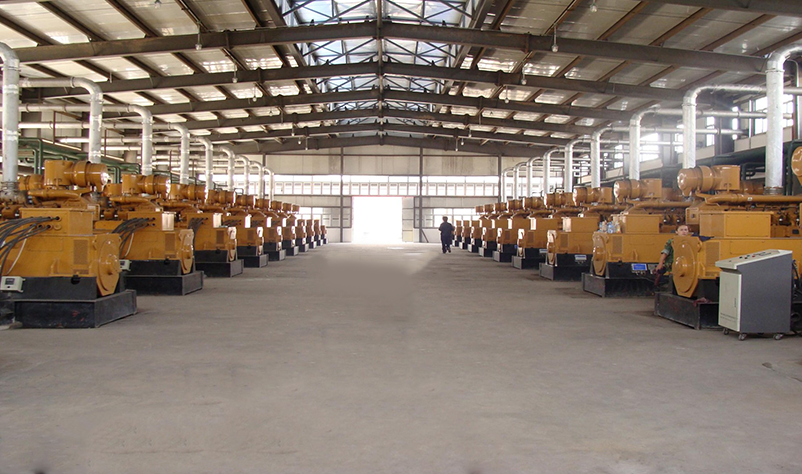沼气发电机组燃烧原料来自何处?多领域来源全解析
沼气发电机组的核心燃烧原料是沼气,这种以甲烷为主要成分的可燃气体,其来源广泛且与各类有机废弃物的资源化利用密切相关。深入了解沼气的来源,不仅能清晰把握沼气发电机组的燃料供应逻辑,更能体现其在循环经济中的重要价值。
The core combustion material of biogas generator set is biogas, which is a combustible gas mainly composed of methane. Its source is extensive and closely related to the resource utilization of various organic wastes. A deep understanding of the source of biogas not only enables a clear grasp of the fuel supply logic of biogas generators, but also reflects its important value in the circular economy.
农业生产领域是沼气原料的重要来源地。在种植业中,大量的农作物秸秆是生成沼气的优质原料。小麦、玉米、水稻等作物收获后,剩余的秸秆含有丰富的纤维素、半纤维素等有机物,这些物质在厌氧环境下能被微生物分解转化为沼气。此外,蔬菜种植过程中产生的残枝败叶、瓜果藤蔓等农业废弃物,也可作为沼气原料,避免了随意焚烧或堆放造成的环境污染。在养殖业中,畜禽粪便更是理想的沼气原料。猪、牛、羊等牲畜的粪便富含蛋白质、脂肪等有机物,且产量稳定,一家中等规模的养殖场每天就能产生数吨粪便,这些粪便经过收集处理后,既能为沼气生产提供持续原料,又能解决粪便堆积带来的卫生问题和水体污染风险。
The agricultural production field is an important source of biogas raw materials. In the agricultural industry, a large amount of crop straw is a high-quality raw material for generating biogas. After harvesting crops such as wheat, corn, and rice, the remaining straw contains abundant organic matter such as cellulose and hemicellulose, which can be decomposed and converted into biogas by microorganisms in anaerobic environments. In addition, agricultural waste such as residual branches, fallen leaves, and fruit vines generated during vegetable cultivation can also be used as biogas raw materials, avoiding environmental pollution caused by indiscriminate burning or stacking. In the breeding industry, livestock manure is an ideal source of biogas. The feces of livestock such as pigs, cows, and sheep are rich in organic matter such as protein and fat, and their production is stable. A medium-sized breeding farm can produce several tons of feces every day. After collection and treatment, these feces can provide continuous raw materials for biogas production and solve the hygiene problems and water pollution risks caused by feces accumulation.

工业生产过程中产生的有机废弃物,也是沼气原料的重要补充。食品加工行业在生产过程中会产生大量的下脚料,如啤酒酿造后的酒糟、豆制品加工后的豆渣、水果加工后的果皮果核等,这些废弃物有机物含量高、易降解,非常适合用于沼气生产。制药、造纸等行业的部分有机废水和废渣,在经过预处理去除有害物质后,也可进入沼气发酵系统,实现废物的能源化利用。工业有机废弃物作为沼气原料,不仅降低了企业的废物处理成本,还能通过沼气发电为企业提供部分能源,形成节能降耗的良性循环。
The organic waste generated in the industrial production process is also an important supplement to biogas raw materials. The food processing industry generates a large amount of waste materials during the production process, such as beer lees after brewing, soybean residue after processing soy products, fruit peels and pits after fruit processing, etc. These waste materials have high organic content and are easy to degrade, making them very suitable for biogas production. Part of the organic wastewater and waste residue from industries such as pharmaceuticals and papermaking, after pre-treatment to remove harmful substances, can also enter the biogas fermentation system to achieve energy utilization of waste. Industrial organic waste, as a raw material for biogas, not only reduces the waste treatment cost of enterprises, but also provides some energy for enterprises through biogas power generation, forming a virtuous cycle of energy conservation and consumption reduction.
市政生活领域产生的有机垃圾,为沼气原料提供了稳定来源。城市居民日常生活中产生的厨余垃圾,包括剩菜剩饭、菜叶果皮、过期食品等,含有大量的碳水化合物和有机物,是生成沼气的优质原料。随着垃圾分类政策的推进,厨余垃圾被单独收集后,可集中输送至沼气处理厂进行发酵产沼。此外,市政污水处理厂的污泥也是重要的沼气原料,污泥中含有大量的微生物残骸和有机碎屑,在厌氧发酵条件下能转化为沼气,同时还能实现污泥的减量化和稳定化处理,降低污泥处置的难度和成本。
The organic waste generated in the field of municipal life provides a stable source of biogas raw materials. The kitchen waste generated by urban residents in their daily lives, including leftovers, vegetable peels, expired food, etc., contains a large amount of carbohydrates and organic matter, and is a high-quality raw material for generating biogas. With the promotion of garbage classification policies, kitchen waste can be collected separately and transported to biogas treatment plants for fermentation and biogas production. In addition, sludge from municipal sewage treatment plants is also an important raw material for biogas. Sludge contains a large amount of microbial debris and organic debris, which can be converted into biogas under anaerobic fermentation conditions. At the same time, sludge reduction and stabilization treatment can be achieved, reducing the difficulty and cost of sludge disposal.
水生植物及水生生物废弃物同样可以作为沼气原料。在河流、湖泊、池塘等水域中,生长的芦苇、浮萍、水葫芦等水生植物,生长速度快、生物量大,其体内的有机物含量丰富,可通过收割打捞作为沼气发酵的原料。同时,水产养殖过程中产生的鱼虾粪便、残饵以及水生植物的残体等,也能进入沼气发酵系统,将水体中的有机物质转化为清洁能源,形成 “养殖 — 沼气 — 能源” 的生态循环模式。
Aquatic plants and aquatic biological waste can also be used as biogas raw materials. In rivers, lakes, ponds, and other water bodies, aquatic plants such as reeds, duckweed, and water hyacinth grow rapidly and have a large biomass. They are rich in organic matter and can be harvested and salvaged as raw materials for biogas fermentation. At the same time, fish and shrimp feces, residual feed, and aquatic plant residues generated during aquaculture can also enter the biogas fermentation system, converting organic matter in the water into clean energy and forming an ecological cycle model of "aquaculture biogas energy".
本文由沼气发电机组友情奉献.更多有关的知识请点击://m.gz-yanye.com我们将会对您提出的疑问进行详细的解答,欢迎您登录网站留言.
This article is a friendly contribution from a gas generator set For more information, please click: //m.gz-yanye.com We will provide detailed answers to your questions. You are welcome to log in to our website and leave a message
 在线咨询
在线咨询 官方二维码
官方二维码




 当前位置:
当前位置: 2025.07.21
2025.07.21








